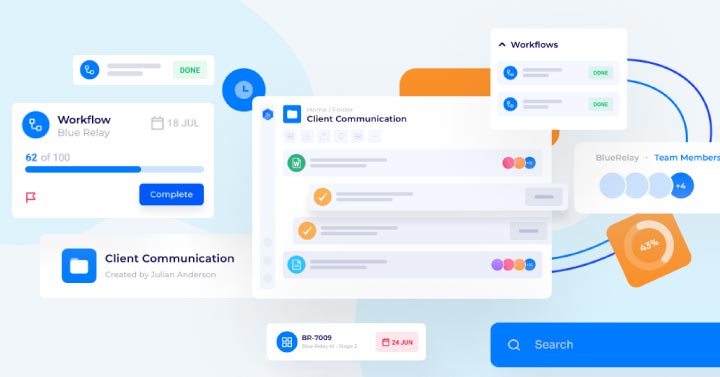Often, human error results in inaccurate data. Today, we look at two common situations where human error surfaces in payer data and how the right technology can remedy these problems.
Client Onboarding
When payers onboard a new client, the process involves a considerable amount of data input from the new customer at first. Then, internal processes on the payer-side kick in. You have quality assurance, CMS, and other regulatory compliance maintenance and reviews that involve a lot of repetitive tasks and workflows. All of these tasks end up far too reliant on emails, spreadsheets, and other manual and person-intensive processes.
Document workflow automation is essential for client onboarding. The right system for your business simplifies processes and minimizes the potential for human error by tracking processes and documents. The system automatically initiating and following up on critical document reviews and approvals while streamlining and simplifying collaboration and communication.
All of this can also be done in real-time. As data and documents are moved through a system and updated, the system assigns attributes, tags, and stores information in a way to allow you to generate reports for future planning and strategy.
Provider Directory Management
By nature, provider directories are living documents that require frequent changes and updates. This is not just driven by provider changes where, say, one moves his or her physical location or adds or drops a service line and lags and is slow to communicate with a payer. State and national regulatory systems have placed the burden of updating and managing these directories increasingly on the payer.
CMS and state regulators have requirements for the frequency with which payers must contact practices to update information. Some states even require payers to contact providers monthly. This adds even more need for an integrated automated workflow solution with checks and balances to help teams update, navigate, and confirm accurate data.
In the right system, teams or individuals can be assigned a certain batch or number of providers for which information must be verified. Even more, parts of each individual’s responsibility within a team could be automated by triggering contact or reminders when it’s time to initiate contact with a provider.
Streamlined processes for how information is updated can start at the gathering, or credentialing, phase when a provider is new to your directory. Once licensing, education, and demographic information are collected at the outset, the system can be set up to assign team members, tasks, schedule reminders, and track the status of updates thereafter.
Wrapping it up
Using a workflow automation tool for both directory maintenance and client onboarding clarifies where each team member must focus their attention and eliminates the tedious repetitive tasks and manual processes in their day to free them up for higher-level thinking.
Less email and spreadsheet chasing ultimately decreases the potential for human error, too. Teams can set up a system with the right checklists and approvals so that everyone understands if data is complete, updated, or needs attention.
If you’re a health payer struggling with how to decrease human error in your data collection and maintenance systems, it may be time to implement a more transparent, streamlined system that gets teams on the same page and helps you reduce costs while effectively serving customers and providers.
Get Started with Blue Relay to Automate your Member Onboarding Process
Blue Relay is a Document Process Automation Tool that can help your company adjust to working remotely and remain HIPAA Compliant. Blue Relay helps with Workflow Automation, Team Collaboration, and Document Review and Approval Get your company back on track while remaining compliant.
- 100% Virtual Implementation
- Seamless Onboarding and Training
- Pre-built Workflows and Dashboards



